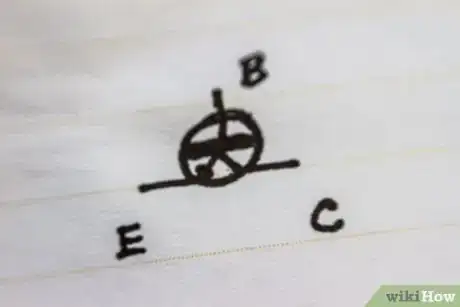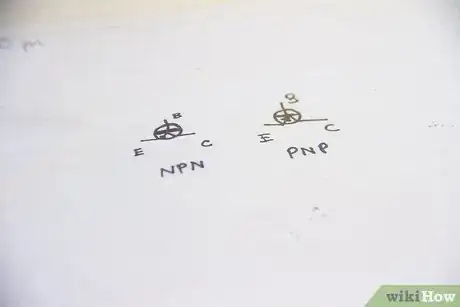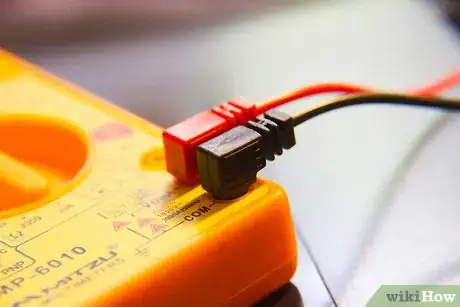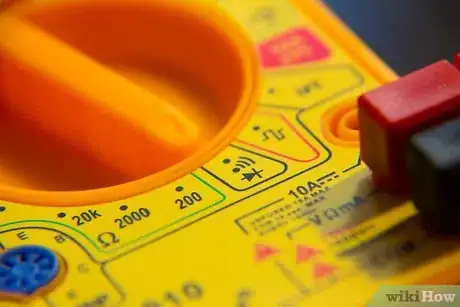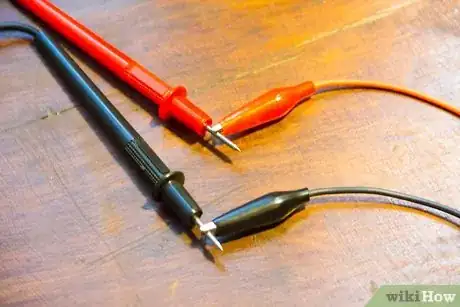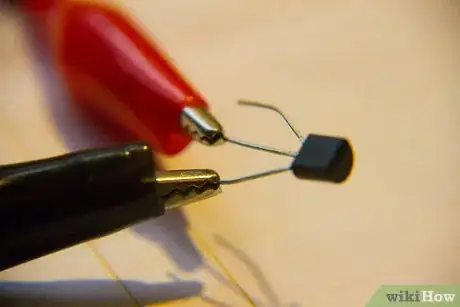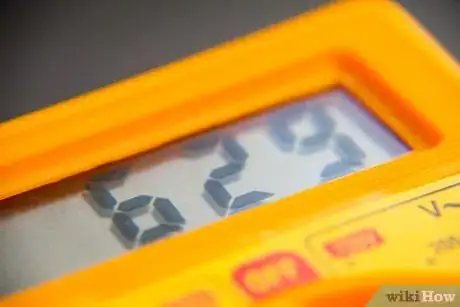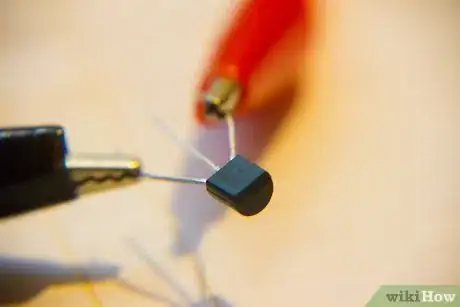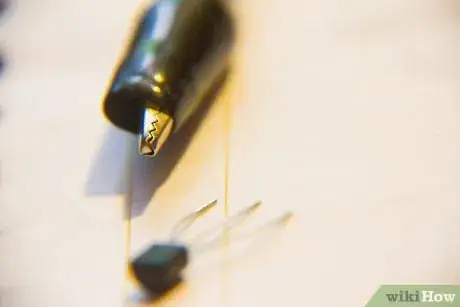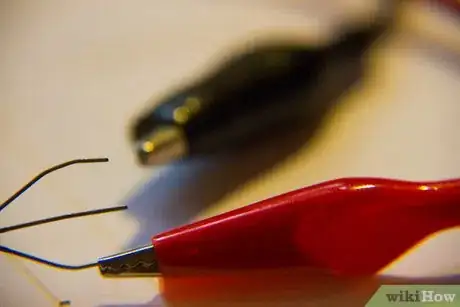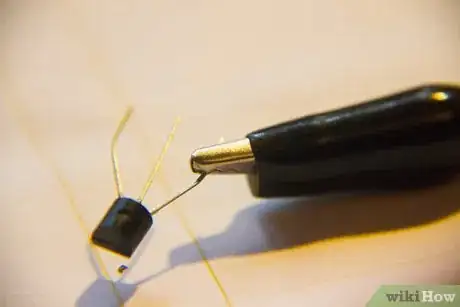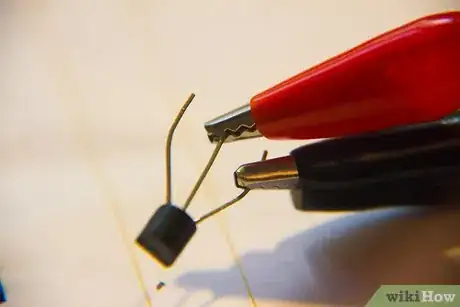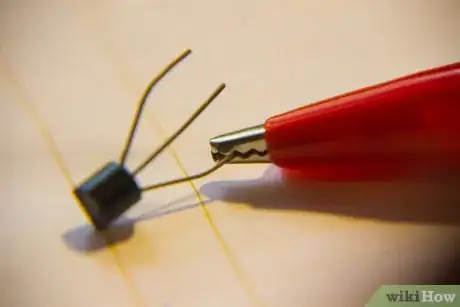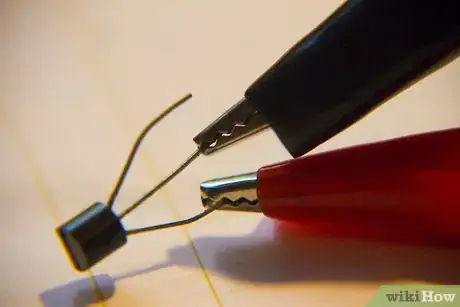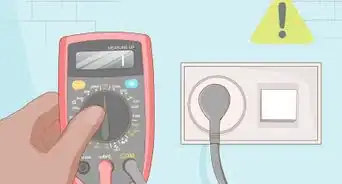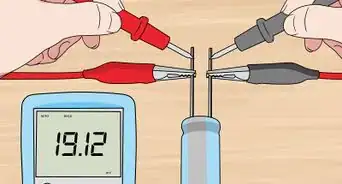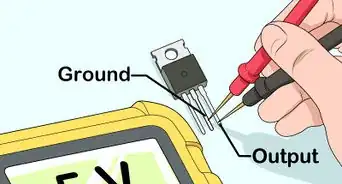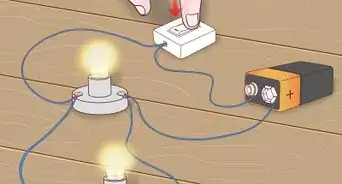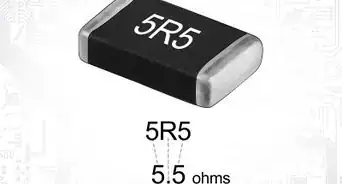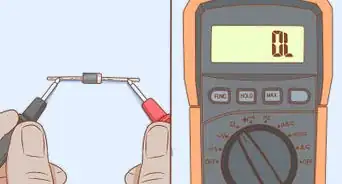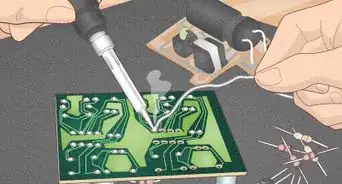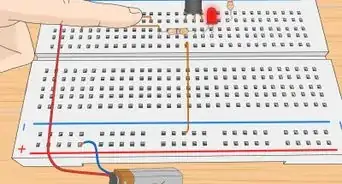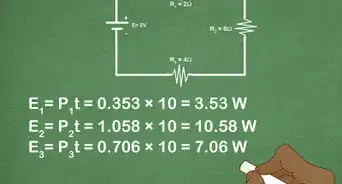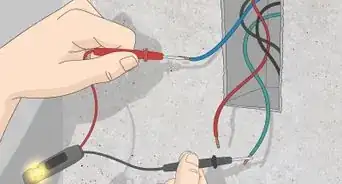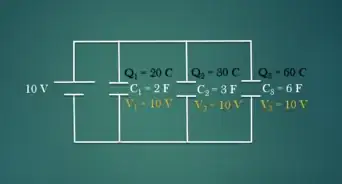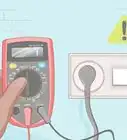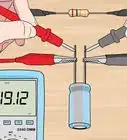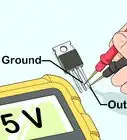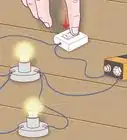wikiHow is a “wiki,” similar to Wikipedia, which means that many of our articles are co-written by multiple authors. To create this article, 26 people, some anonymous, worked to edit and improve it over time.
This article has been viewed 506,058 times.
Learn more...
A transistor is a semiconductor that allows current to flow through it under certain conditions, and cuts current off when other conditions are present. Transistors are commonly used as either a switch or a current amplifier. You can test a transistor with a multimeter that has a diode test function.
Steps
Understanding Transistors
-
1A transistor is basically 2 diodes that share one end. The shared end is called the base and the other 2 ends are called the emitter and collector.[1]
- The collector accepts an input current from the circuit, but it can't send the current through the transistor until allowed to by the base.
- The emitter sends a current out into the circuit, but only if the base allows the collector to pass the current through the transistor to the emitter.
- The base acts like a gate. When a small current is applied to the base, the gate opens and a large current can flow from the collector to the emitter.
-
2Transistors may operate by junctions or field effects, but both come in two basic types.[2]
- An NPN transistor uses a positive semiconductor material (P-type) for the base and negative semiconductor material (N-type) for the collector and emitter. On a circuit diagram, an NPN transistor shows an emitter with the arrow pointing out ("Never Points iN" aids remembering).
- A PNP transistor uses an N-type material for the base and P-type material for the emitter and collector. The PNP transistor show an emitter with the arrow pointing in ("Points In Permanently" is the memorizer).
Setting Up the Multimeter
-
1Insert the probes into the multimeter. The black probe goes into the common terminal and the red probe goes into the terminal marked for testing diodes.[3]
-
2Turn the selector knob to the diode test function.[4]
-
3Replace the probe tips with alligator clamps.
Testing When You Know the Base, Emitter and Collector
-
1Determine which leads are the base, emitter and collector. The leads are round or flat wires extending from the bottom of the transistor. They may be labeled on some transistors or you may be able to determine which lead is the base by studying the circuit diagram.[5]
-
2Clamp the black probe to the base of the transistor.[6]
-
3Touch the red probe to the emitter. Read the display on the multimeter and note whether the resistance is high or low.[7]
-
4Move the red probe to the collector. The display should give the same reading as when you touched the probe to the emitter.
-
5Remove the black probe and clamp the red probe to the base.
-
6Touch the black probe to the emitter and collector. Compare the reading on the multimeter's display to the readings you got previously.
- If the previous readings were both high and the current readings are both low, the transistor is good.
- If the previous readings were both low and the current readings are both high, the transistor is good.
- If both readings you receive with the red probe are not the same, both readings with the black probe are not the same, or the readings don't change when switching probes, the transistor is bad.
Testing When You Don't Know the Base, Emitter and Collector
-
1Clamp the black probe to 1 of the leads of the transistor.[8]
-
2Touch the red probe to each of the other 2 leads.
- If the display shows high resistance when each of the leads are touched, you have found the base (and you have a good NPN transistor).
- If the display shows 2 different readings for the other 2 leads, clamp the black probe to another lead and repeat the test.
- After clamping the black probe to each of the 3 leads, if you don't get the same high resistance reading when touching the other 2 leads with the red probe, you either have a bad transistor or a PNP transistor.
-
3Remove the black probe and clamp the red probe to 1 of the leads.
-
4Touch the black probe to each of the other 2 leads.
- If the display shows high resistance when each of the leads are touched, you have found the base (and you have a good PNP transistor).
- If the display shows 2 different readings for the other 2 leads, clamp the red probe to another lead and repeat the test.
- After clamping the red probe to each of the 3 leads, if you don't get the same high resistance reading when touching the other 2 leads with the black probe, you have a bad PNP transistor.
Community Q&A
-
QuestionHow do I differentiate between transistors?
 Community AnswerBy clamping the black probe to one of the three leads. If the multimeter displays high resistance when each lead touched, the transistor is NPN and is good. The reverse of the above conditions is PNP transistor.
Community AnswerBy clamping the black probe to one of the three leads. If the multimeter displays high resistance when each lead touched, the transistor is NPN and is good. The reverse of the above conditions is PNP transistor. -
QuestionHow can I tell the difference between a collector and an emitter?
 Community AnswerA collector accepts input current from the circuit. An emitter send current out into the circuit.
Community AnswerA collector accepts input current from the circuit. An emitter send current out into the circuit. -
QuestionIs there any difference between the resistance value of base emitter and base collector?
 Community AnswerYes - voltage drop is a little higher for the base to emitter than for the base to collector.
Community AnswerYes - voltage drop is a little higher for the base to emitter than for the base to collector.
Things You'll Need
- Multimeter with leads
- Alligator clips
- Transistor
References
- ↑ https://www.explainthatstuff.com/howtransistorswork.html
- ↑ https://www.allaboutcircuits.com/textbook/semiconductors/chpt-5/junction-field-effect-transistors-jfet/
- ↑ https://learn.sparkfun.com/tutorials/how-to-use-a-multimeter/all
- ↑ https://learn.sparkfun.com/tutorials/how-to-use-a-multimeter/all
- ↑ http://www.technologystudent.com/elec1/transis1.htm
- ↑ https://sciencing.com/diagnose-circuit-board-bad-transistor-8049011.html
- ↑ https://sciencing.com/diagnose-circuit-board-bad-transistor-8049011.html
- ↑ https://vetco.net/blog/test-a-transistor-with-a-multimeter/2017-05-04-12-25-37-07
About This Article
To test your transistor, first clamp the black probe of a multimeter to the transistor’s base. Then, touch the red probe to the emitter and read the display to see if the resistance is high or low. Next, move the red probe to the collector, and check that the reading is the same as it was before. Once you have those readings, remove the black probe from your transistor and clamp the red probe to the base. You can then touch the black probe to the emitter and collector and look at the new readings. Your transistor is good if your previous readings were both high and the current readings are both low, or the opposite is true. To learn how to test your transistor when you don’t know the base, emitter, and collector, keep reading!
